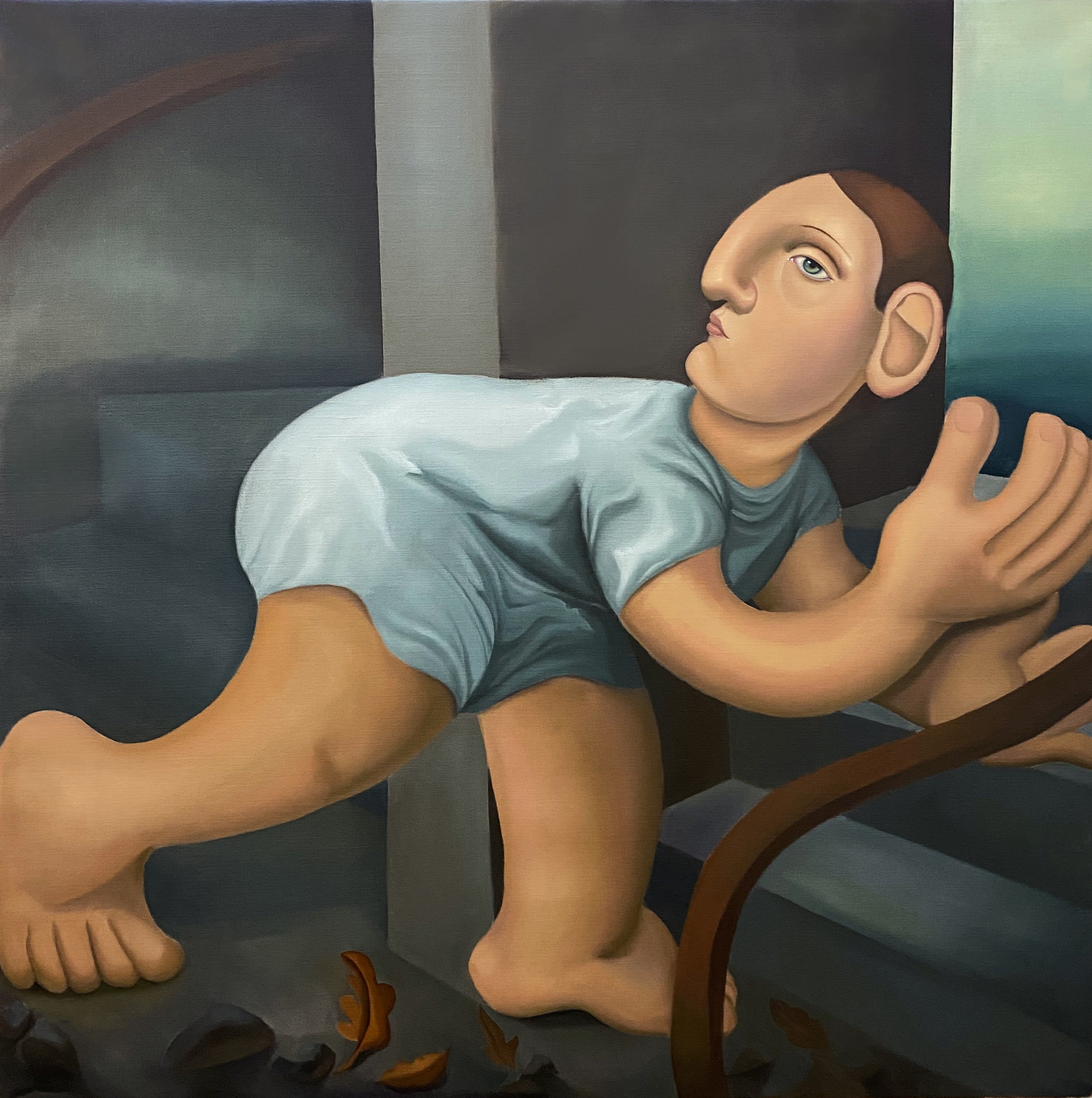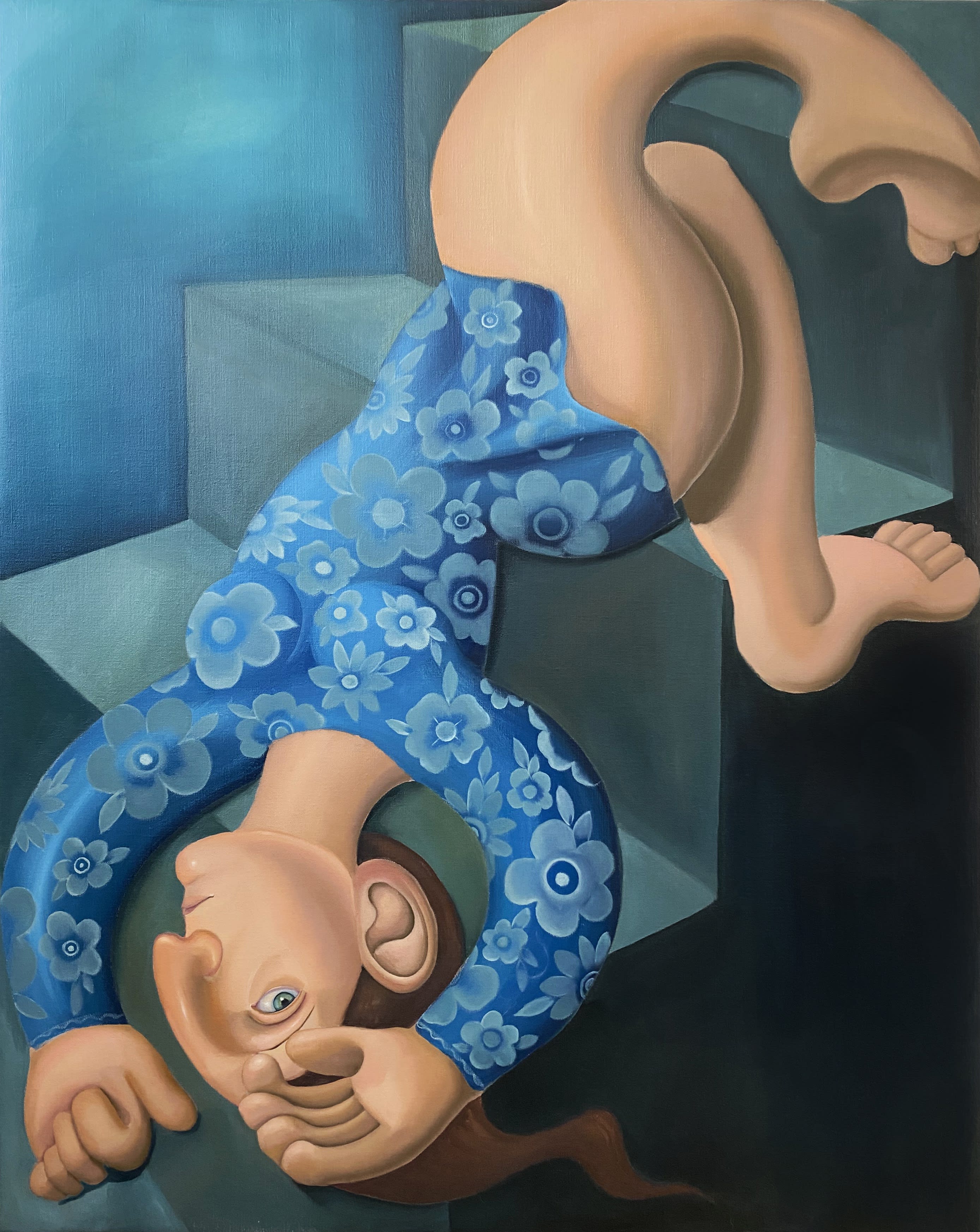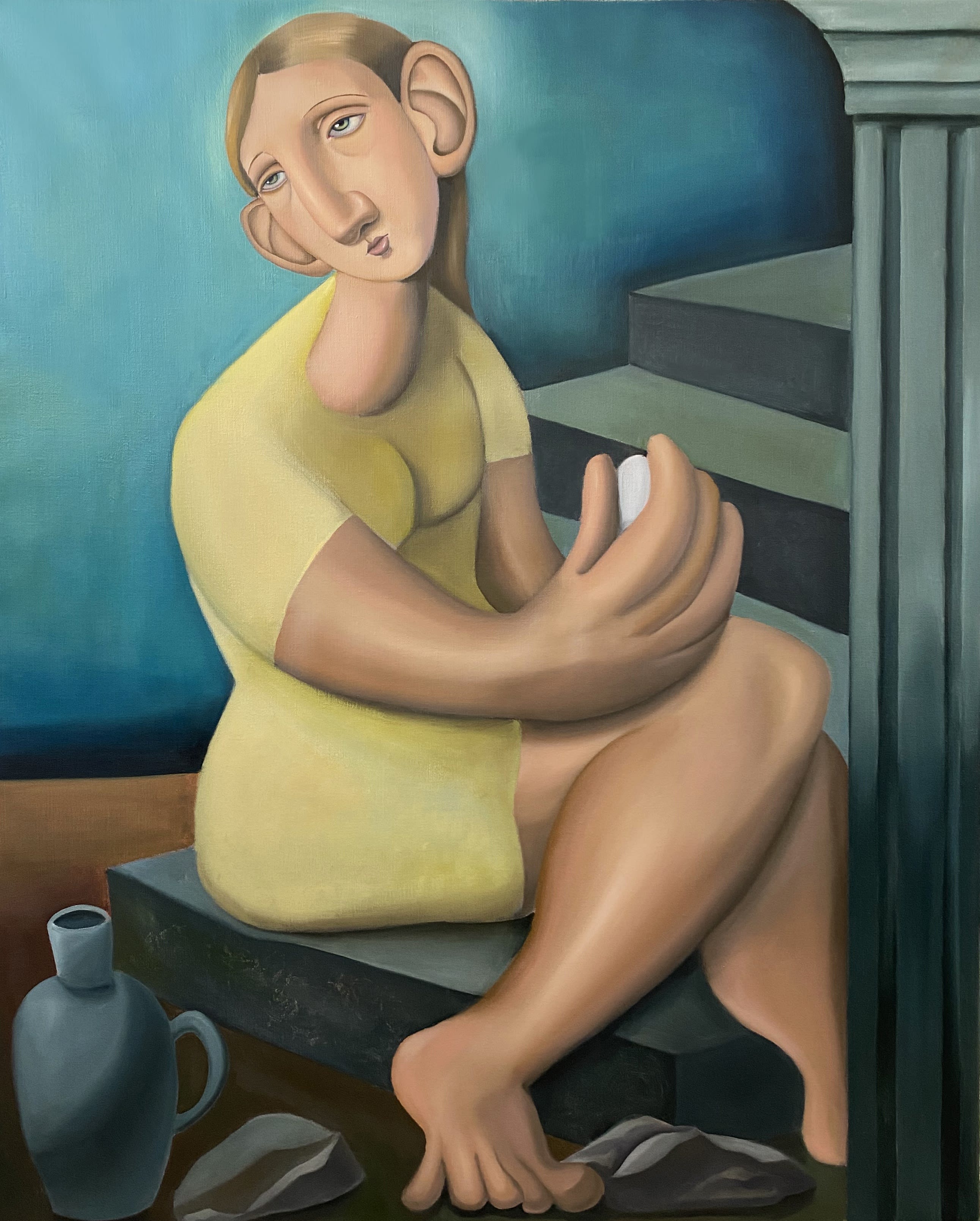Elina Ojakangas is known for her explorative, melancholic oil portraits, and in Those Moments After her themes are exemplified. The most obvious throughout is one of contrast, whether visual, emotional, or structural. By utilising personal experience alongside archetypes, she creates deeply personal portraits that are still relatable to the wider human experience. Her figures' characteristics amplify this, with angular features contrasting against rounded human forms.
The below artwork, Alley, presents this contrast between sharp and soft. While the eye is detailed, with minute marks creating its shine and definition, the legs and hands tell a different story. Gradients, peachy colours, and blurred shadows give the impression of an ever-changing body. The proximity of the hands, in particular, to the eye, nose, and mouth shows a disconnect between the abstracted body and the exaggerated facial features. This disconnect tells a story of a separation between mind and body, and the tension between external circumstances and internal emotions.

The emotional tension in her work is perfectly seen in Stair of Despair, below. Here, the subject is clearly in a state of turmoil as she is falling down the stairs. However, Ojakangas’ abstract style softens the emotions in the piece. The woman may be falling, but her body exists outside of the stairs - they are a flat background rather than an interactive feature. The curl of her legs suggests a gymnastic move, adding a sense of playfulness contrasting the expression on her face. Finally, the floral, pattern on her dress opposes the seriousness of the narrative and the blur of the figure.

The character in My Belongings is one of the most universally recognised archetypes in Ojakangas’ collection. Everyone can relate to the experience of sitting on the step, whether as a child or an adult. However, the extra artistic touches ensure we remember this is her experience. The body, minimally exaggerated compared to her other works, highlights where Ojakangas felt the emotions in that moment: her ears, hands, and neck. The dress reminds us we are not the creators of this memory - we are not the wearers of the yellow dress. Despite this, the atmosphere, with its anonymous stairs, still allows a level of relatability that creates a connection between the viewer and the scene.

As seen in these examples from Those Moments After, contrast is a cornerstone of Ojakangas’ style. Her debut exhibition showcases her unique approach to emotions, form, and subject in depicting the effects of experiences on our inner selves. Gallery Director Terri Lew described Ojakangas’ work as “uniquely weird, angular and well-executed,” summing up perfectly the effect the power of contrast can have.
Those Moments After is in the Project Room until 1st February 2025.








